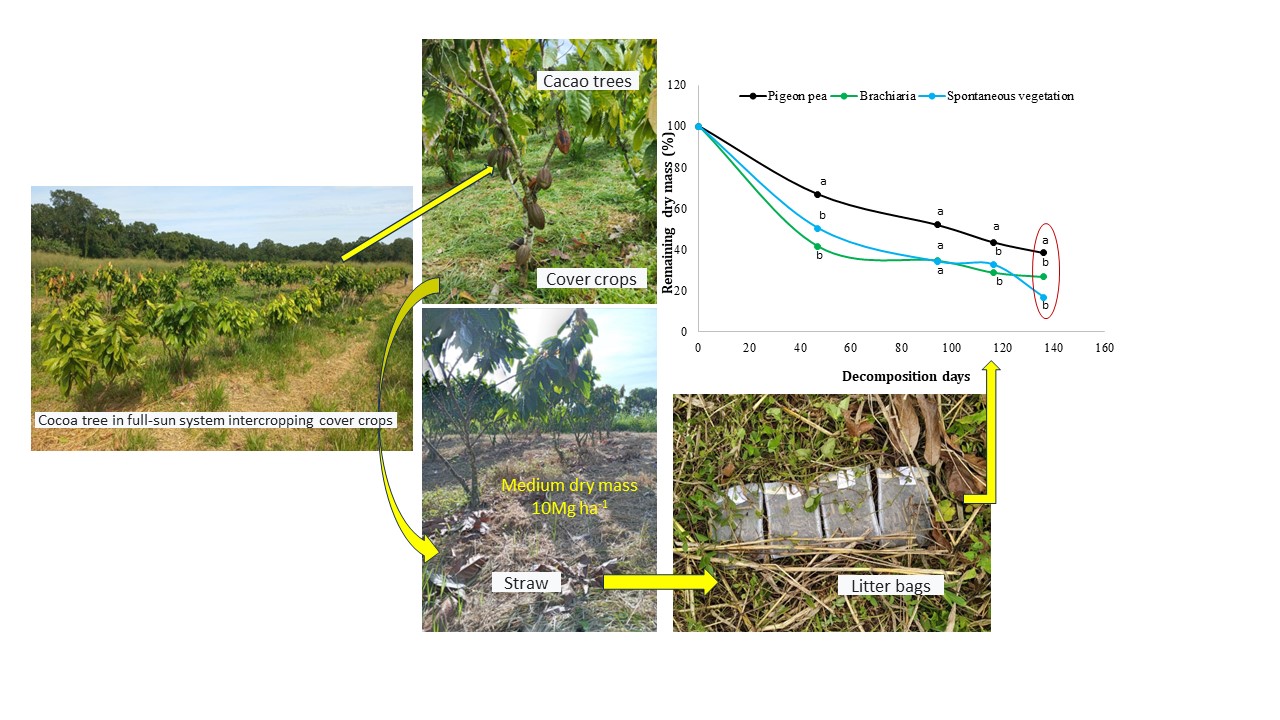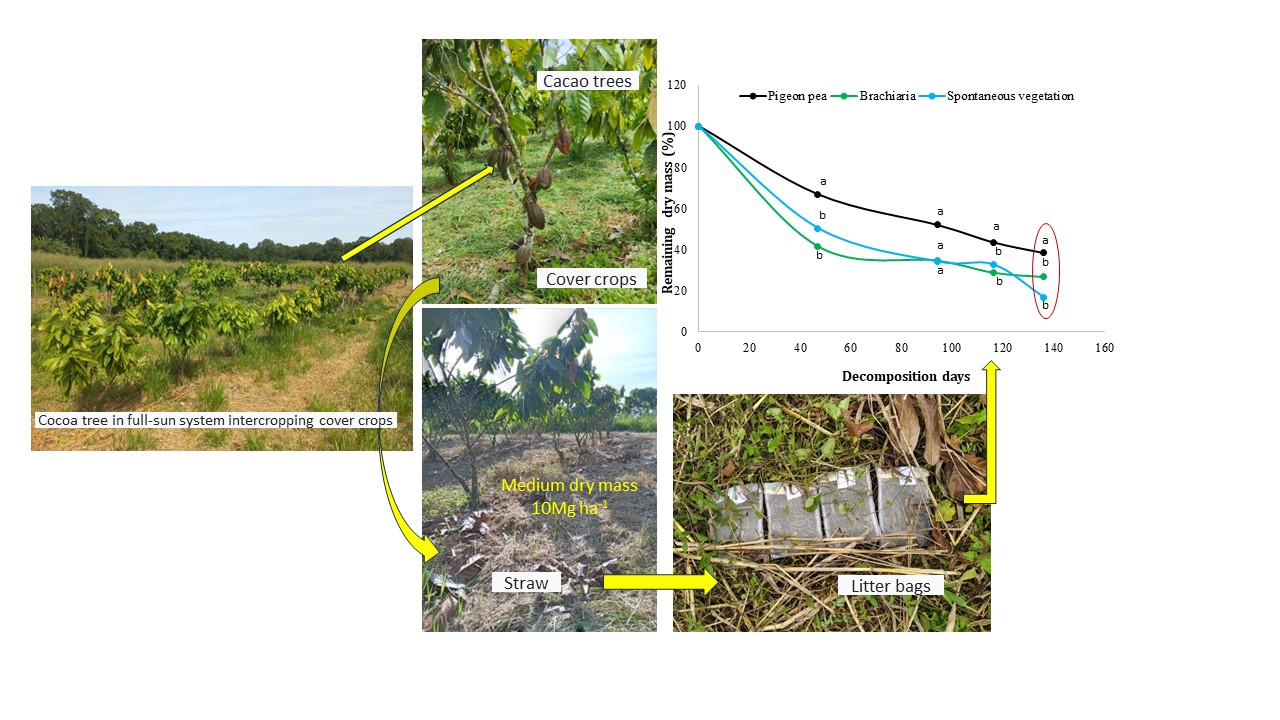Dry mass production, nutrient accumulation and decomposition rate of cover crops intercropped with a Theobroma cacao full-sun system
Keywords:
cocoa monoculture, soil cover, Fabaceae, PoaceaeAbstract

Cover crops play a crucial role in promoting soil protection, enhancing organic matter content, facilitating nutrient cycling, and improving overall soil quality. The objective of this study was to evaluate the biomass production, nutrient accumulation, and decomposition rate of cover crops intercropped with Theobroma cocoa trees in a full-sun system. The research was conducted in Ilhéus, Bahia state, Brazil. The experimental design employed randomized blocks with three treatments, four decomposition times, and four replications. The treatments consisted of three cover crops: 1) pigeon pea (Cajanus cajan); 2) brachiaria (Urochloa decumbens); and 3) spontaneous vegetation. Decomposition rates were evaluated using litter bags at specific intervals: 0, 47, 94, 116, and 136 days after field deposition. Dry biomass production and nutrient accumulation by the cover crops were also measured. Spontaneous vegetation and brachiaria treatments exhibited the highest potassium accumulation, while no significant differences were observed among the treatments for the other evaluated nutrients. Moreover, spontaneous vegetation and brachiaria demonstrated higher decomposition rates, with 16.7% and 26.7% of the deposited material remaining at the end of the 136-day study period, respectively. In contrast, the decomposition rate of pigeon pea proved to be slower, with a remaining dry mass of 38.3%, indicating longer persistence in the soil, and consequently a greater half-life time. The cover crops investigated in this study are regarded as promising options for intercropping with cocoa, as they exhibit an average dry mass production of 10 Mg ha-1. This value falls within the desired range for conservationist systems. When selecting species for intercropping, it is crucial to consider the decomposition rates these plants. This consideration ensures that the soil surface remains covered for an extended duration, leading to enhanced conservation and improvement of the soil’s physical, chemical, and biological properties. Soil conservation can be effectively achieved by choosing cover crop species with slower decomposition rates, thereby contributing to the overall health and quality of the soil.
Highlights:
- This study evaluated biomass production, nutrient accumulation, and decomposition rate of cover crops intercropped with Theobroma cocoa trees in a full-sun system.
- The cover crops investigated exhibit an average dry mass production of 10 Mg ha-1.
- Spontaneous vegetation and brachiaria treatments exhibited the highest potassium accumulation.
- Pigeon pea proved to be slower decomposition rate and largest remaining dry masso on the soil. In contrast, Spontaneous vegetation and brachiaria demonstrated higher decomposition rates, consequently less remaining dry mass.

Downloads
Published
Issue
Section
License
Copyright (c) 2018 Revista de la Facultad de Ciencias Agrarias UNCuyo

This work is licensed under a Creative Commons Attribution-NonCommercial-ShareAlike 3.0 Unported License.
Aquellos autores/as que tengan publicaciones con esta revista, aceptan las Políticas Editoriales.



